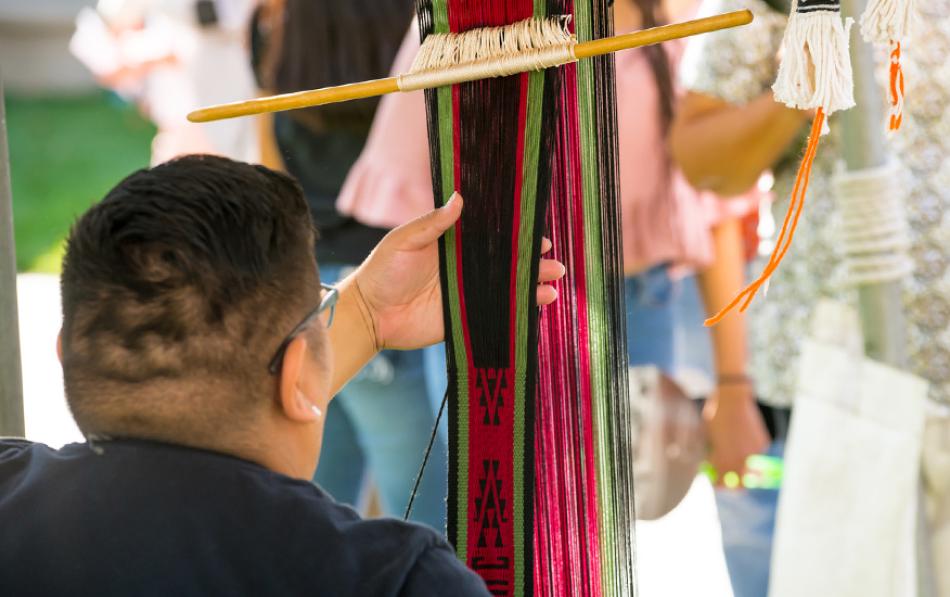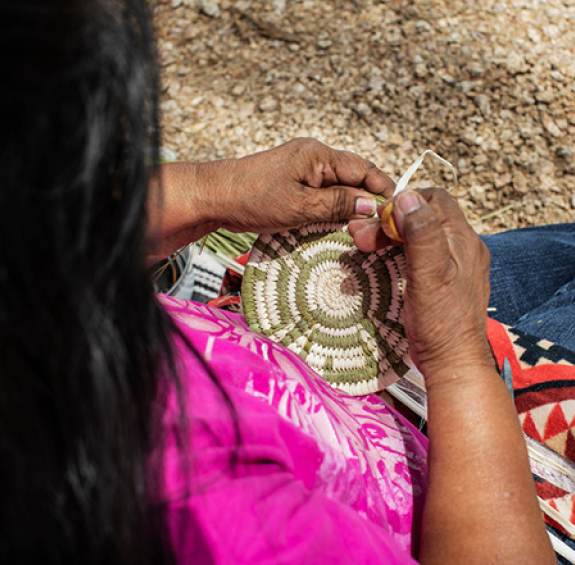
Arts & Culture
How to Buy American Indian Arts and Crafts
Visitors to any of the 22 tribes in Arizona have a wonderful opportunity to buy handmade work directly from the artist or an approved retailer. But how do you know if you're purchasing authentic American Indian goods?
The arts and crafts created by the American Indian, or Native American, tribes living in Arizona have drawn shoppers, tourists and collectors alike for well over a century. It's not uncommon to buy goods like jewelry, pottery, rugs or baskets directly from an artist or specialized retailer.
But how can you tell if what you're buying is truly an authentic American Indian item? Here are some tips to ensure what you're buying is real.
Check the label
The first thing to do is look for a label. The rug in that stack of colorful weavings, arranged and priced by size, may well have a little tag in the corner stating it was woven in Mexico.
Misrepresenting goods as Indian-handmade is a federal offense so more reliable shops will not do so. So check, then ask. Every living Navajo weaver who has spent untold hours before her loom weaving, or teaching her child to weave, will thank you.
Question the origins
But how do you determine authenticity if the tag lacks the artist's or tribe's name? First, use your common sense. If the sign over those colorful, surprisingly affordable baskets proclaims "Village Made," you have to ask yourself (and the salesclerk) what village? It may turn out to be a village in another country where baskets are handwoven copying American Indian designs. They may be colorful, inexpensive decor items, but they are not a true memento of any Southwestern Indian tribe.
More importantly, each imitation basket that sells means a lost sale for one of the few American Indians who still weave them. Once widespread, basket weaving today is largely limited to the Hopi and Tohono O'odham, with a smaller number of weavers among the Apache, Navajo and Paiute tribes.
Study up, then look for clues
Each tribe has its own pottery tradition. In Arizona, the Hopi are the most prolific. They're followed by the Navajo—with their polished and sometimes decorated brown ware (covered with piñon pitch, not glazed)—then, the painted white-and-brown ware from the Tohono O'odham, and, more rarely still, black-on-brown pottery from the Maricopa and Pima tribes.
Even if buying work directly from the artist, ask how it's made. Is it fired out-of-doors or in a kiln? Is it greenware (from a mold) or hand-coiled?
Greenware pottery will have a telltale "kick-up," or base similar to the coffee cups you have at home, and you may be able to make out the fine vertical seam where the mold separated. There is nothing wrong with greenware or kiln-fired pieces, but that information should be disclosed and the price should reflect it.
Ask for documentation

A woman from the Fort McDowell Yavapai Nation organizes her jewelry for sale during a Victory Days celebration.
Jewelry, with all its wonderful variety, can be visually overwhelming. Start by familiarizing yourself with the basic styles, focusing on the style that appeals most to you. You can do this best by purchasing a good introductory book.
There are a number of ways to make American Indian jewelry. Unfortunately, these methods are often copied, and the resulting products are imported from other countries. Stone and shell beads are also imported and restrung (often by Native Americans), resulting in a product referred to as "stringers."
Your best protection is to buy from a reliable source and get a guarantee in writing. Did you buy it because it is Hopi handmade? Then get it in writing. Did you buy a necklace because the stones were drilled, ground and polished by hand by a Native American artist? Then get that in writing, along with the artist's name.
Similarly, you need to know if the stones used are genuine. "Block" is a plastic material made to look like jet, shell, turquoise, coral and other stones. Also, due to the crumbly nature of turquoise (an artist can lose some of the stone to fracturing while working it), some artists prefer to use "treated" or "stabilized" turquoise, which is hardened with a resin. Dyes may be added, too.
Again, there isn't anything wrong with jewelry using these materials, providing the information is disclosed to the buyer and the jewelry is priced accordingly. If you want to buy a piece because it uses natural, untreated turquoise, ask for verification in writing.
And as far as the color and matrix (or markings) are concerned: This is simply a matter of personal preference, so buy what you like.
Sometimes simplicity is key
Traditionally carved by the men of the Hopi nation from cottonwood root, katsina (also known as kachina dolls) represent the spirit beings that visit the Hopi and take their prayers back to ensure the continuation of the life cycle of all things. If you want a Hopi katsina and not a Navajo-created or imported copy of one, steer away from carvings with bright colors and swathed in lots of rabbit fur and feathers—those are generally not genuine.
Spending a little extra time to learn about what you are looking at before you buy it and getting it in writing will help you make a purchase that will be a beautiful and pleasant reminder of your visit to Arizona.

Learn more about the diverse American Indian communities who call Arizona home and populate every area of the state, from the canyons of the north to the cactus-spotted desert in the south.




